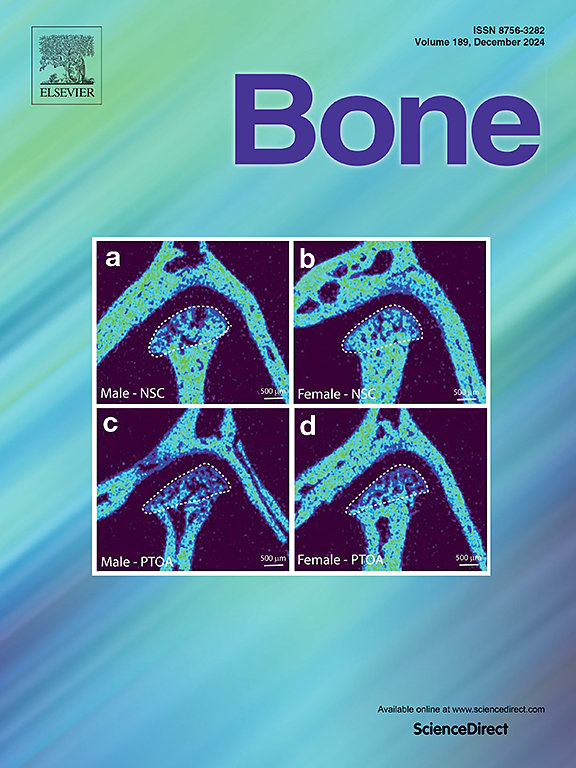Influences and strategies for bone regeneration based on microenvironment pH adjustment
IF 3.5
2区 医学
Q2 ENDOCRINOLOGY & METABOLISM
引用次数: 0
Abstract
Bone possesses remarkable endogenous regenerative capacity. Bone regeneration is typically divided into three stages: inflammation, bone formation, and bone remodeling, during which pH is a critical variable. The influence of pH on the bone regeneration process depends on three main factors: (1) the activity and differentiation of cells involved in bone regeneration are affected by pH; (2) protein activity is regulated by pH; and (3) extracellular calcium phosphate precipitates in a pH-dependent manner. The aim of this study is to review the mechanisms by which microenvironment pH affects bone regeneration and to explore specific sites and signaling pathways involved in pH regulation during the bone regeneration process. Therapeutic approaches aimed at enhancing bone regeneration via modulation of microenvironment pH are discussed, including pH adjustment via biological implant materials, pH-responsive material setting, and pH stabilization through anti-inflammatory therapy. Investigating the impact of microenvironment pH on bone regeneration is of considerable clinical importance, as it provides valuable insights for improving the success rates of bone implants and promoting bone healing. This review offers insights into regulatory mechanisms, establishes theoretical foundations, and presents new perspectives for current research on bone defect repair.
微环境pH调节对骨再生的影响及策略。
骨具有显著的内源性再生能力。骨再生通常分为三个阶段:炎症、骨形成和骨重塑,其中pH值是一个关键变量。pH对骨再生过程的影响主要取决于三个因素:(1)参与骨再生的细胞的活性和分化受到pH的影响;(2)蛋白活性受pH调节;(3)细胞外磷酸钙以ph依赖的方式沉淀。本研究的目的是回顾微环境pH值影响骨再生的机制,并探索骨再生过程中pH值调节的特定位点和信号通路。本文讨论了通过调节微环境pH值来促进骨再生的治疗方法,包括通过生物植入材料调节pH值、pH响应材料设置和通过抗炎治疗稳定pH值。研究微环境pH值对骨再生的影响具有重要的临床意义,因为它为提高骨种植体的成功率和促进骨愈合提供了有价值的见解。本文综述了骨缺损修复的调控机制,建立了理论基础,为当前骨缺损修复的研究提供了新的视角。
本文章由计算机程序翻译,如有差异,请以英文原文为准。
求助全文
约1分钟内获得全文
求助全文
来源期刊

Bone
医学-内分泌学与代谢
CiteScore
8.90
自引率
4.90%
发文量
264
审稿时长
30 days
期刊介绍:
BONE is an interdisciplinary forum for the rapid publication of original articles and reviews on basic, translational, and clinical aspects of bone and mineral metabolism. The Journal also encourages submissions related to interactions of bone with other organ systems, including cartilage, endocrine, muscle, fat, neural, vascular, gastrointestinal, hematopoietic, and immune systems. Particular attention is placed on the application of experimental studies to clinical practice.
 求助内容:
求助内容: 应助结果提醒方式:
应助结果提醒方式:


